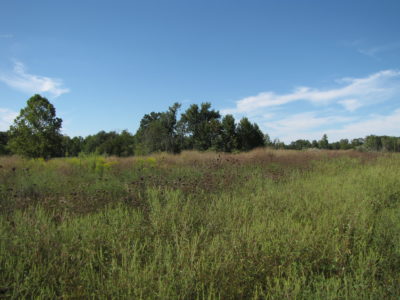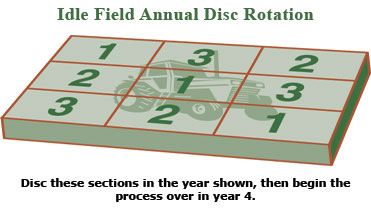
This diverse stand of native forbs and wildflowers with sparse grass cover provides excellent quail brood-rearing and bugging area, not to mention excellent habitat for pollinating insects. It provides concealment from above, but has ample open space and bare ground below.
There are many techniques for producing brood-rearing cover, but the easiest is to simply fallow, or idle a piece of cropland. You probably have several unproductive field edges, or a few small fields where cropping is not profitable. These areas should be left idle. To maintain their value as brood-rearing cover, they should be fall-disced every other year. Discing in late winter or early spring is also effective, but it is often too wet to disc during this period. Establish a rotation so that all your brood-rearing areas are not disced during the same year. If erosion is a concern, sow the areas to winter wheat at 1/2 to 3/4 the normal rate. Weedy winter wheat stands make excellent quail chick cover.
If you are not comfortable simply letting weeds grow, disc the areas, then sow them with 8 to 10 lbs. of common ragweed and 1 to 2 lbs. of partridge pea per acre in February, March or early April. This seeding rate may seem low to you; but remember, the best quail chick habitat should not be too thick. By planting at the rates described above, the result will be a good mix of planted vegetation and annual weeds-perfect chick habitat. These areas will provide good winter forage, too.


